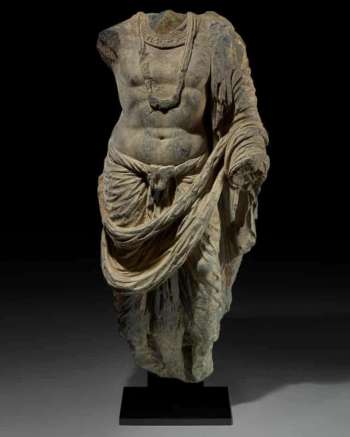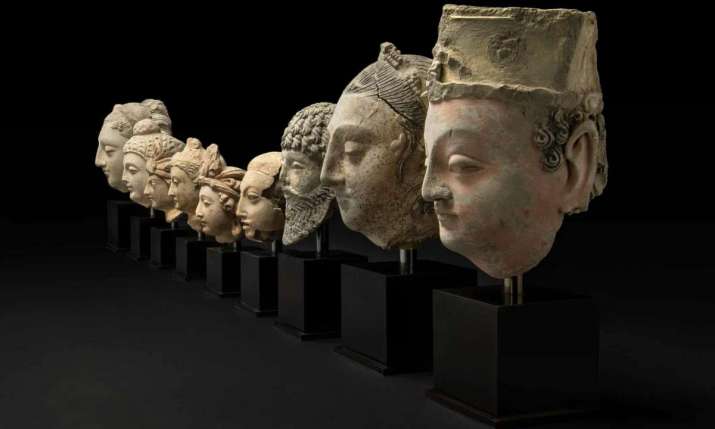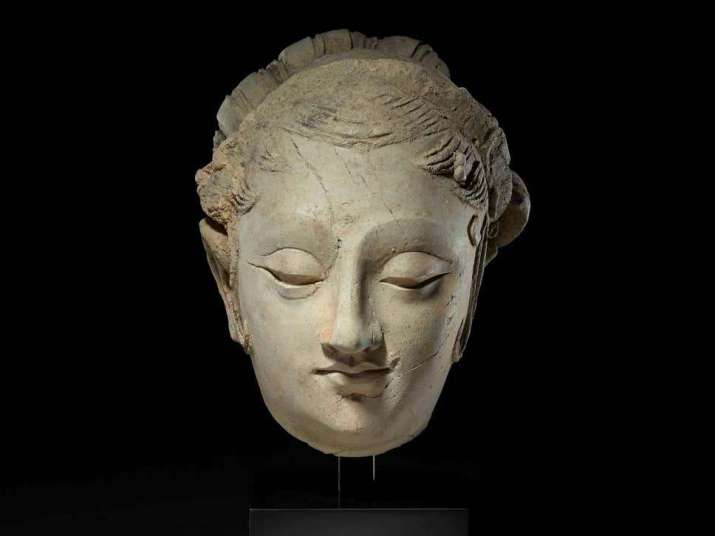Ancient Buddhist artifacts from Afghanistan will soon be returned to Kabul and go on display in the National Museum of Afghanistan, according to British Museum officials. The repatriation of these objects is one of the most significant cases of stolen art being returned to the region. The items include nine sculpted heads likely chopped off by Taliban looters and the intact torso of a bodhisattva, all in the Gandharan style common to the region.
The objects were first discovered stuffed in wooden crates at London’s Heathrow Airport in 2002. While their origin was traced to Peshawar in Pakistan, they were sent to the British Museum in 2018 to be analysed and catalogued.
St. John Simpson, a senior curator at the museum, told The Guardian newspaper that the heads would have been painted and had bodies, and would have adorned the walls of Buddhist monasteries in the ancient kingdom of Gandhara some 1,500 years ago.
 From theguardian.com
From theguardian.com“They are stunning,” he observed. “These are quite outstanding. We’ve returned thousands of objects to Kabul over the years but this is the first time we’ve been able to work on Buddhist pieces.” (The Guardian)
Simpson further noted that the items were likely caught up in the period of the Taliban’s most destructive iconoclasm. It was during that time that the famous Bamiyan Buddhas were destroyed to international condemnation.
“The return of any object which has been illegally trafficked is hugely important symbolically,” said Simpson. “But these pieces will form one of the largest groups of Buddhist art to be returned to the Kabul museum. When you think what Kabul has been through since the 1990s, culminating in the atrocity of Bamiyan, this is a huge event.” (The Guardian)
Hartwig Fischer, director of the British Museum, said: “War, conflict, climate change, globalisation, poverty, and migration all play a part in the threats to cultural heritage. The museum adopts a systematic approach, working with many colleagues across the world to help preserve, train, conserve, document and understand material culture.”
He added: “Sadly, this work is more essential now than ever and the museum will continue and increase its efforts to assist colleagues globally in the preservation and celebration of their cultural heritage.” (The Independent)
The British Museum’s Asia collection boasts an impressive range of art and artifacts from across the history and geographical span of Buddhism. “Key areas include a large and comprehensive collection of sculpture from the Indian subcontinent, including the celebrated limestone Buddhist reliefs from Amaravati, and an outstanding range of early Japanese antiquities and graphic art. The Chinese collection includes the Buddhist paintings from the Dunhuang caves in Central Asia. . .” (British Museum)
The artifacts to be returned have been dated to the fourth to sixth centuries CE, when Buddhism flourished in this area, which served as a trading route between India, China, and the Middle East. Hundreds of monasteries existed in the region, only to be abandoned around the eighth century CE, when Arab invaders entered into and took over the area. Earlier discoveries at an area called Mes Aynak point to extensive remains of an ancient Buddhist settlement that dates to the Kushan Gandhara period, and further archaeological evidence points to civilizations in the area flourishing as early as the third century BCE.*
* Exquisite Ancient Buddha Image from Mes Aynak to be Exhibited at National Museum of Afghanistan (Buddhistdoor Global)
See more
British Museum to return precious artefacts looted from Iraq and Afghanistan (The Independent)
British Museum to return Buddhist heads looted in Afghan war (The Guardian)
Department of Asia (British Museum)
Related news from Buddhistdoor Global
British Museum’s Revamped Sir Joseph Hotung Gallery Offers a Fresh Perspective on South Asian Buddhist Art
The British Museum Reimagines Buddhist Shrine and Ancient Pilgrims with Smartphone Technology
First exhibition of Gandhara Buddhist Antiquities Opens in South Korea
From Gandhāra to Gupta
Layers of Indo-Greek City Discovered in Swat Valley, Pakistan

















